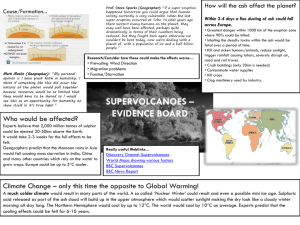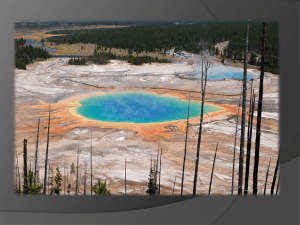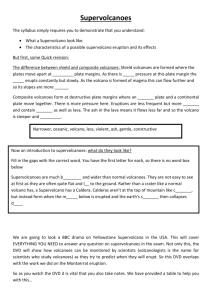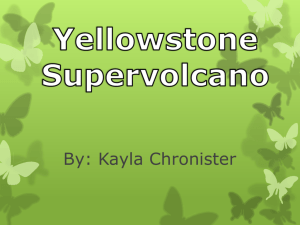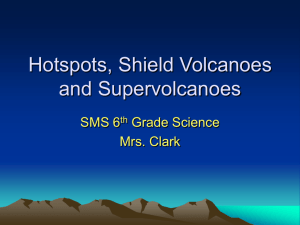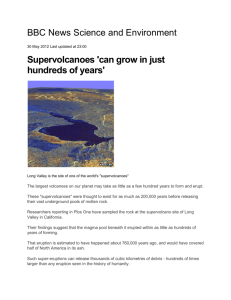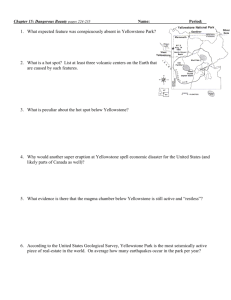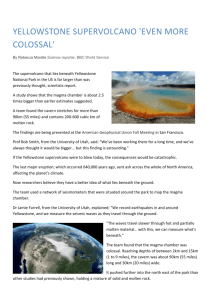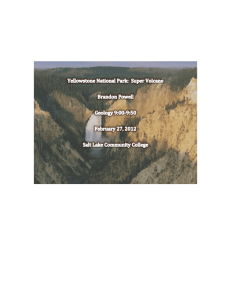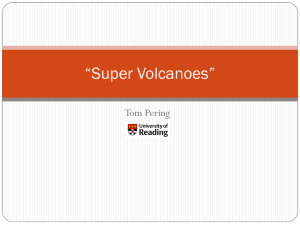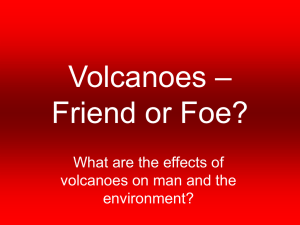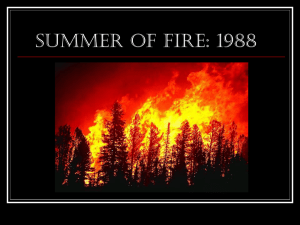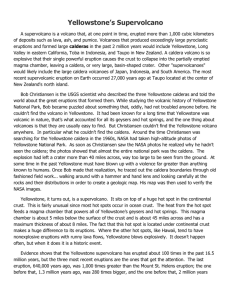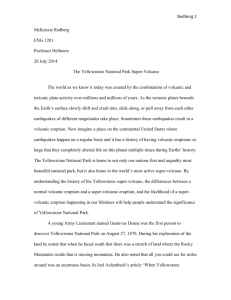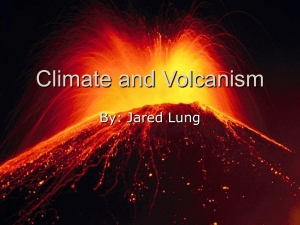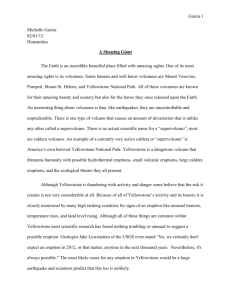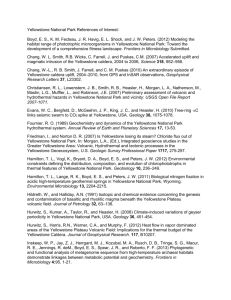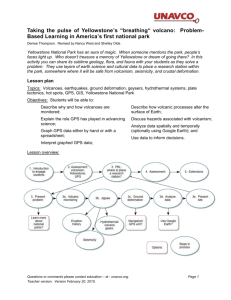What is a Supervolcano?
advertisement
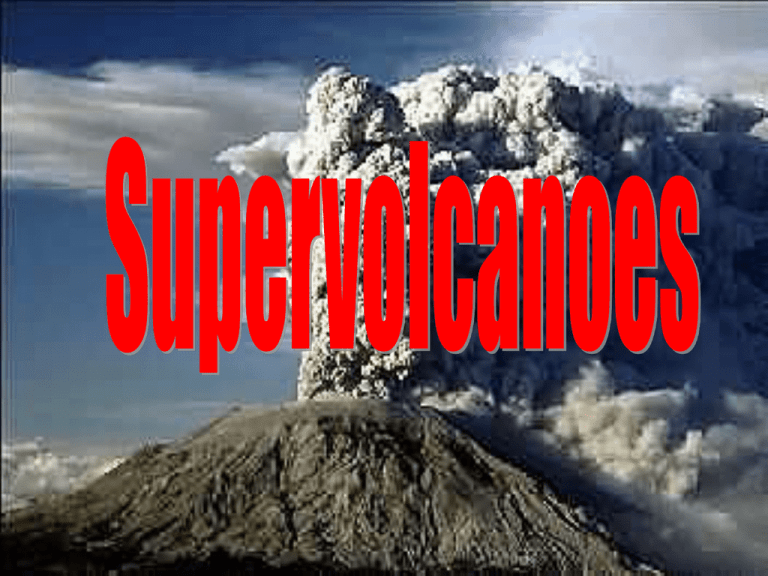
Supervolcanoes Aims To be able to locate and label Supervolcanoes To distinguish between Supervolcanoes and Volcanoes. What is a Supervolcano? How is it different to a regular Volcano? Supervolcanoes are on a much bigger scale than normal volcanoes. A Volcano becomes ‘Super’ when it emits in excess of 1,000km3 of material. Supervolcanoes appear different to other volcanoes. They have large depressions in the centre known as Calderas which are ringed by smaller craters. These craters are often joined up by fissures to form the caldera. Tasks 1. Use the internet to find the definitions of the words in red The Location of Volcanoes and Supervolcanoes Use the internet to mark the locations of Volcanoes and Supervolcanoes on the map above. KEY: Use Red triangles for Volcanoes and Yellow squares for Supervolcanoes Define the following terms: • Geothermal • Geyser • Hot spot WATCH THE VIDEO CLIPS ON THE HAZARDS WEBPAGE ON SUPERVOLCANOES This supervolcano, located in Yellowstone National Park, USA threatens the existence of people – at the very least those in North America, if not globally. Many visitors stand in awe looking at Old Faithful and the geothermal features of the Norris Geyser basin without realising the vulnerability of where they are standing. Old Faithful Norris Geyser There is evidence that the magma beneath Yellowstone is moving. The caldera is bulging up below Lake Yellowstone and in places the ground has risen 70cm in places. The magma chamber underneath Yellowstone is 80km long, 40km wide and 8km deep. It is not known whether the magma is on top of other materials which would be needed for an eruption. The most recent eruption at this hot spot was 630,000 years ago (before that it erupted 1.3 and 2 million years ago). An eruption today would have a catastrophic effect. The Yellowstone supervolcano has a magma chamber five times the minimum size for a supervolcano eruption. Diagram of the area affected by the last 2 Yellowstone eruptions The Effects of an Eruption at Yellowstone • 10,000 km2 of land will be destroyed. • 87, 000 people will be killed. • 15cm of ash would cover buildings within 1,000km. • Ash will affect transport, electricity, water and farming. • Lahars (mudflows due to ice mixing with melting ice or water). • Ash would fall on the UK 5 days later. • Globally climates would change, crops would fail and many people would die. Contrast Supervolcanic eruptions with regular Volcanic eruptions. Mt St Helens Yellowstone Location North West USA West USA Plate Boundary Destructive – North American/Juan de Fuca Hot Spot Classification Active Dormant Last eruption affected area Ash zone 39km from crater Ash zone 3200km from crater Last eruption volume of material 2 cubic metres 2,000 cubic metres Last eruption other effects 53 deaths Possible extinction of all life on the North American continent
